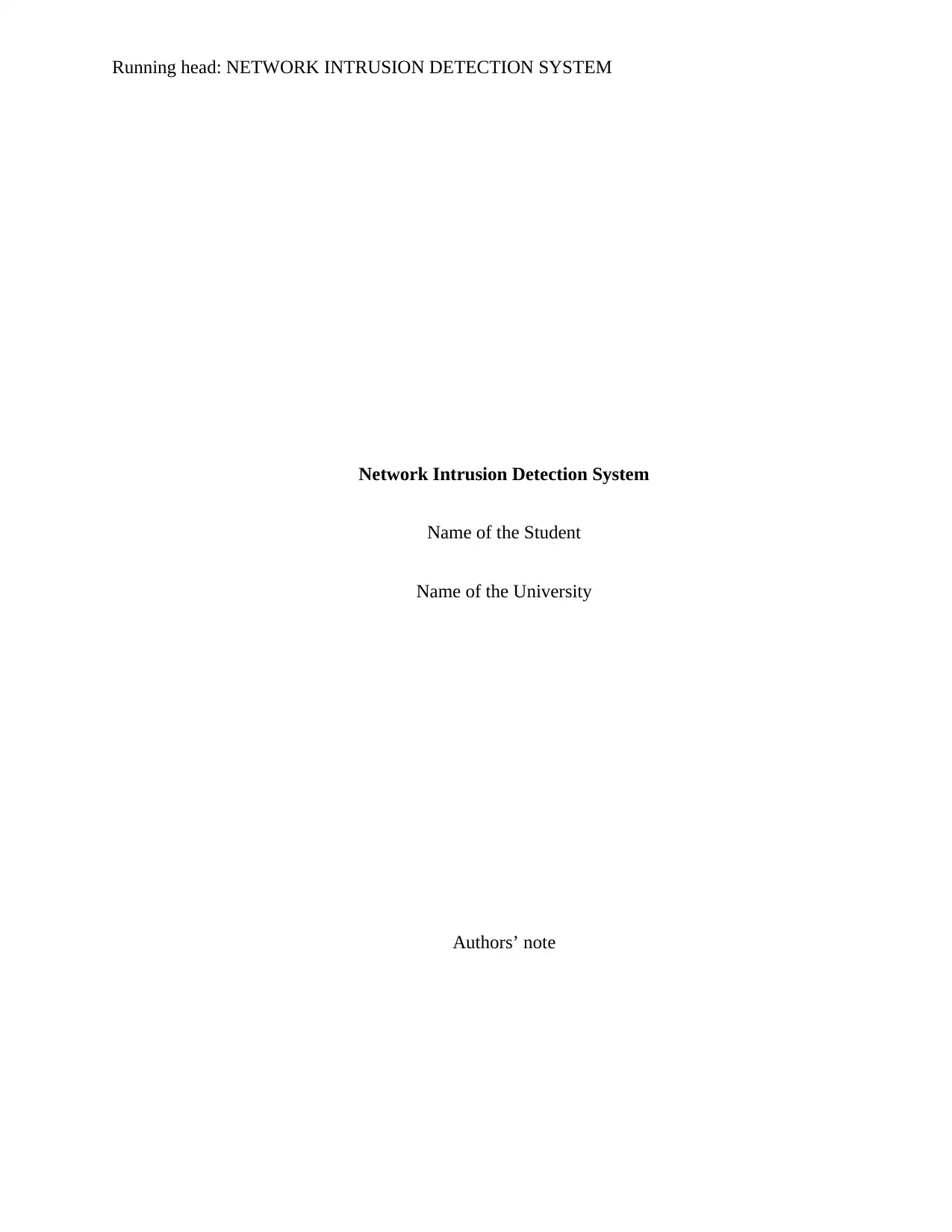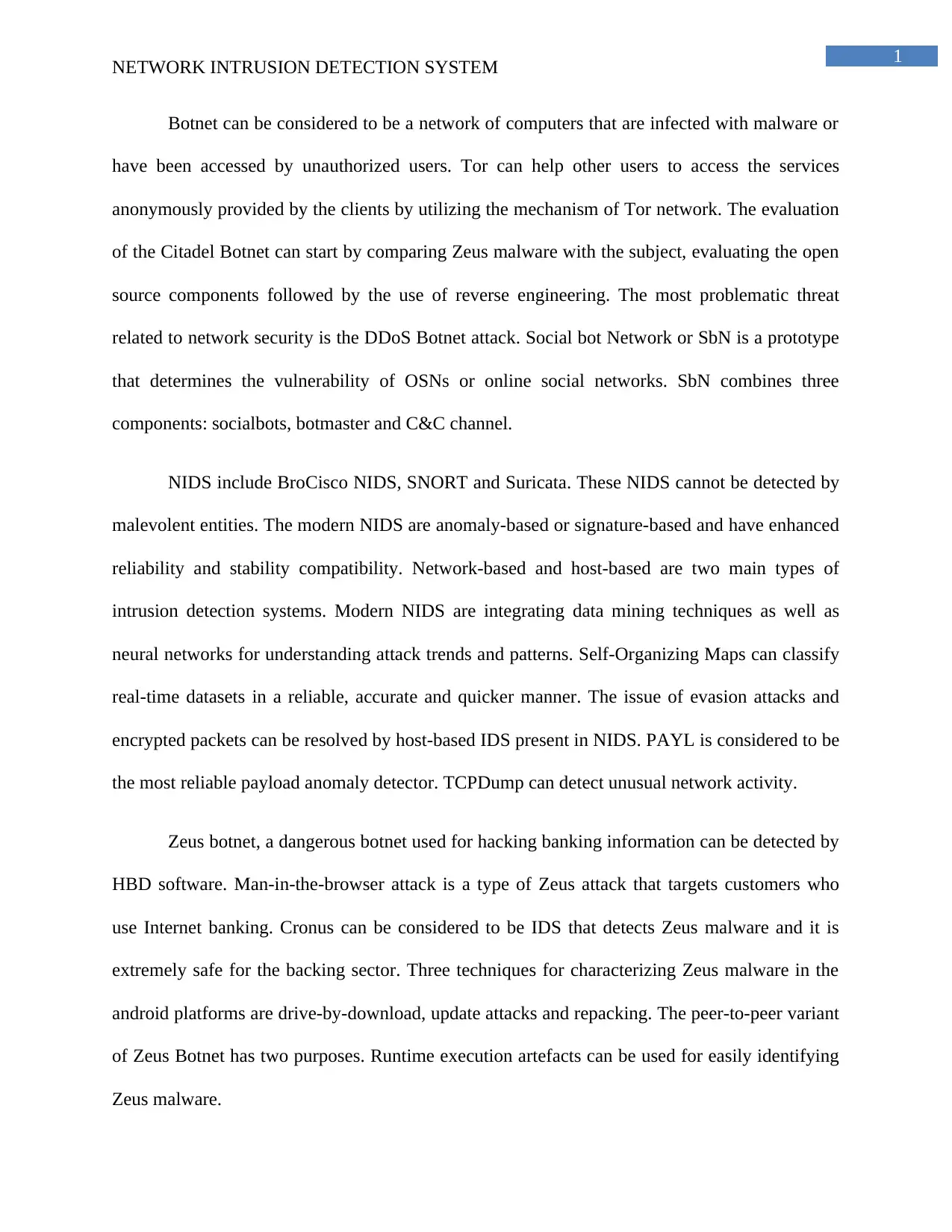University Network Intrusion Detection Systems Assignment
VerifiedAdded on 2020/05/16
|2
|364
|30
Report
AI Summary
This report provides an analysis of network intrusion detection systems (NIDS), botnets, and malware. It begins by discussing the concept of botnets and their impact on network security, with a focus on the Zeus malware and its variants. The report explores various NIDS, including BroCisco, SNORT, and Suricata, and their capabilities in detecting malicious activities. It also examines the differences between signature-based and anomaly-based detection methods, and how modern NIDS integrate data mining and neural networks for improved performance. The report further explores the types of attacks, such as DDoS and Man-in-the-browser, and how they can be detected and mitigated using tools like TCPDump and HBD software. The report also discusses the use of Cronus for detecting Zeus malware and techniques for identifying Zeus malware in Android platforms, including drive-by-download and update attacks. The report also covers the peer-to-peer variant of Zeus Botnet and the use of runtime execution artifacts for malware identification. The report highlights the importance of NIDS in protecting networks from various threats and the need for continuous improvement in detection techniques.
1 out of 2








![[object Object]](/_next/static/media/star-bottom.7253800d.svg)